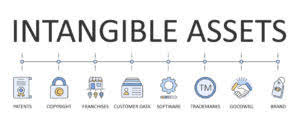
Using company money should be avoided in case an order gets canceled or the client rejects an item. In case of any changes in the proposed prices, it is imperative to reflect the same immediately in the deposits and invoicing. Breaking up project phase-wise makes updating bookkeeping and deposits organized. This will give you a sense of your average income and expenses. Consider your fixed costs, variable costs, and any expected revenue or expense changes. Make sure to review and update your budget to reflect any changes in your business.
Simple, straightforward pricing for everything your business needs.
Create a retained earnings budget and project your future income and expenses. You can also measure your performance against your targets. Outsourcing bookkeeping services to a third-party provider can be a cost-effective option. They specialize in working with interior designers or creative professionals. Ensure that the provider has strong security measures in place.
- We handle the bookkeeping for you but sometimes we’ll need your input, especially at year-end.
- Common accounts for interior designers may include income categories.
- On the expense side, it’s important to keep track of all your business expenses, both big and small.
- Bookkeeping ends up being compliance work, which sucks because it’s not stuff that drives your business forward,” explains Megan.
- However, meticulous bookkeeping can be a game-changer.
- While using cheque books might seem straightforward initially, it is neither always viable nor efficient for a growing business.
Issuing Payments

By categorizing your expenses, you can gain insights into where your money is going. You can also identify any areas of overspending or potential cost savings. Tracking your income and expenses is a fundamental aspect of bookkeeping. This involves recording all money coming into your business (income). By tracking these transactions, you can generate financial reports. You can also interior design bookkeeping track profitability and identify areas for improvement.
- When considering hiring a bookkeeper or outsourcing bookkeeping services, check your budget.
- It also helps you identify opportunities for growth and make strategic business decisions.
- Consider project costs, marketing expenses, and office rent.
- Then, you can make informed decisions about your business.
- Consult with a tax professional to make an informed decision.
- Trust us to respond within one business day or less.
- It’s also worth exploring software that caters to interior designers.
Lay down the law, and set up a schedule

But good accounting for interior designers requires that you set an invoicing schedule and stick to it, even when you get busy. Whether you’re invoicing bi-weekly or monthly, it’s important to be consistent so that clients remain informed. If your billing is inconsistent, clients can easily be surprised by the costs they’ve racked up—and refuse to pay, especially if costs have exceeded their budget. If you invoice consistently, clients will be aware of the current costs and be able to address any concerns they have more promptly. That means fewer concessions from you—discounts, rebates, or even just swallowing a write-off. By invoicing consistently, you can minimize the risk of account receivable write-offs and decreased income for your firm.


They can help you navigate the complexities of the tax code. They ensure that you maximize your tax savings while staying compliant with the law. Say hello to a more organized and profitable business.
Recording Payments and Managing Invoices
These may include income from design services, product sales, or rental income. They may also include expenses such as office rent, utilities, and marketing costs. Within each category, you can further divide the accounts into subcategories. Yet, many interior designers find it beneficial to hire a bookkeeper. It ensures that your financial records are accurate Bookkeeping for Chiropractors and up to date. Another vital aspect of bookkeeping for interior designers is the ability to track project costs.

Keeping Detailed Records and Cloud Backups
You bill your clients for the amount of time you spend on their projects, so you need meticulous records about how many hours you’re really logging for a client. It can be easy to simply skip tallying your time or even to lose track of time when you’re in deep on a project. Like many interior designers, if you skip this step, you probably underestimate how much time you spent when you total your time after the fact.

